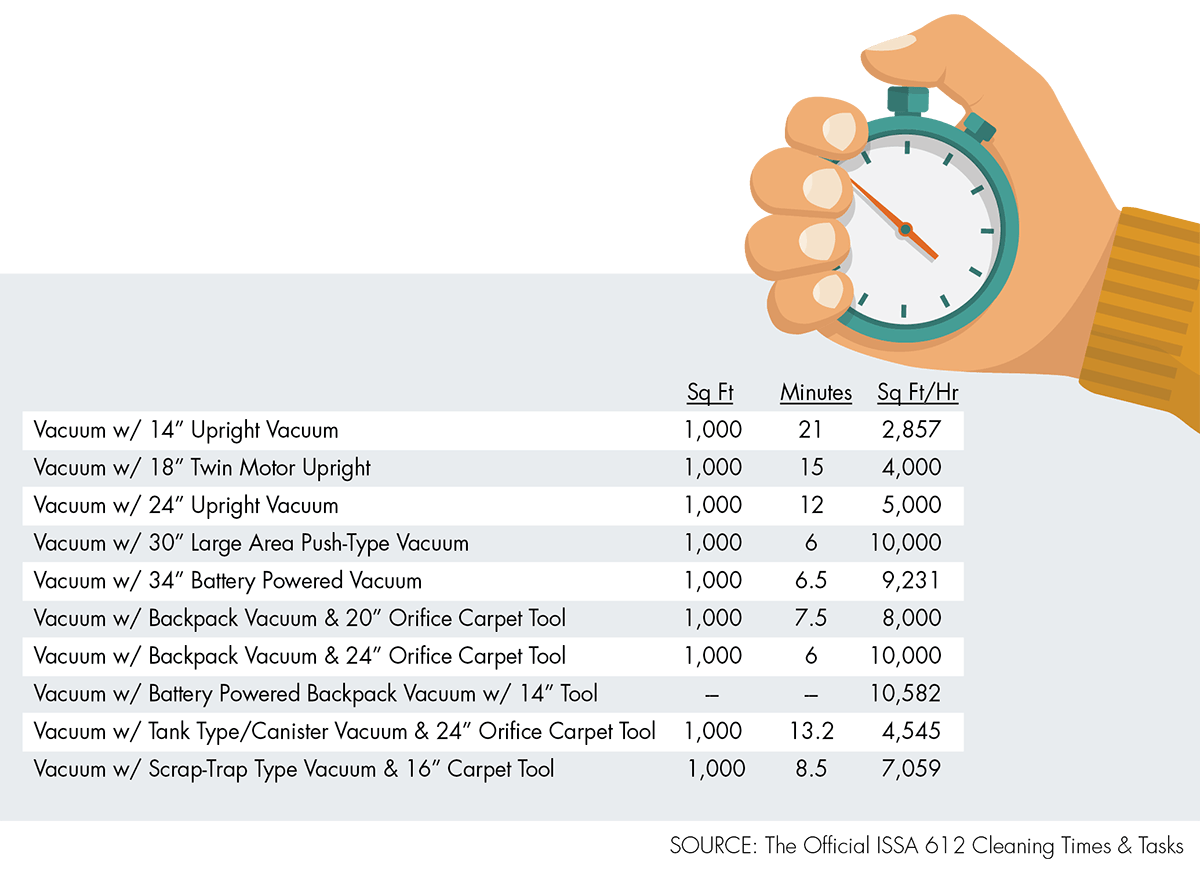
There are more vacuum options than ever, complicating the purchasing process for many building service contractors. With no one-size-fits-all solution available, BSCs must weigh many factors to select the best machine for the job.
Very often, cordless backpacks make the most sense and offer the potential for the greatest return on investment. Depending on the layout and size of a facility, however, a traditional corded upright may be needed.
Pulling The Plug
There are good reasons why so many contractors are switching from corded to cordless vacuums. In the right circumstances, pulling the plug can offer some very appealing benefits.
Among the key perks is an increase in productivity. A 12-inch upright vacuum can clean 2,230 square feet per hour, while a backpack with a 12-inch orifice carpet tool can clean 7,273 square feet per hour, according to "The Official ISSA 612 Cleaning Times &Tasks."
The differences between corded and cordless are also substantial.
"You can vacuum 30 to 40 percent more square footage per hour with a battery backpack versus a corded backpack," says Teri Guinn, director of sales, High Point Sanitary Solutions, Houston. "The increase in productivity over a corded upright is nearly 250 percent more square footage per hour."
The disparities in mobility are also notable, with cordless vacuums allowing cleaning techs to move freely about a space. Without a cord to manage, users can easily maneuver the vacuum in tight spaces, such as stairwells and up and down rows of desks. It also reduces time wasted on searching for and plugging a cord into an outlet.
"One of the challenges with the backpack has always been the cord and cord management," says Jeff Merrihew, senior consultant with Concepts4, Albany, New York. "Taking away the cord increases productivity. The amounts depend on the environment, but we're probably seeing a 20 to 30 percent increase. And it's higher in school environments."
The elevated safety of a cordless setup cannot be understated either, as a cord running down a hallway or up a flight of stairs is an accident waiting to happen. Cordless machines prevent trips and falls that can result in painful injuries, work absences and costly lawsuits.
"If you compare the cost of a vacuum — even a $1,500 vacuum — to the cost of litigating one trip, there's no comparison," says Merrihew. Cordless versions typically boast lower decibel ratings and superior filtration systems, which reduce noise pollution and improve indoor air quality. It's also important to note, in light of COVID-19 concerns, that cords can transfer viruses.
"The cord is on the ground and dirty carpet," says Mike Sawchuk, owner of Sawchuk Consulting, St. Catharines, Ontario, Canada. "Most custodians aren't using gloves when they wrap up that cord – it becomes a vehicle of transmission. That's something people should be concerned about."
The absence of a cord also means the absence of plugging and unplugging a vacuum — a potentially damaging process to both the cord and outlets over time. Cords can also be damaged when they are run over by the machine, snagged on furniture or corners, or subjected to foot traffic. Battery backpacks not only eliminate cord damage costs, they also have significantly lower repair costs than a traditional upright, or even a corded backpack.
"When you factor in replacement cords, brushes, belts, bearings and motors, the yearly cost of ownership on that cheap upright doesn't seem so cheap anymore," Guinn says.

Corded Vs. Cordless Vacuum Features

 The Down and Dirty on Cleaning in Virus Season
The Down and Dirty on Cleaning in Virus Season How Surfactant Use is Expanding in Commercial Cleaning
How Surfactant Use is Expanding in Commercial Cleaning Maximize Your Margins: Learn How to Automate Pricing and Track Rebates
Maximize Your Margins: Learn How to Automate Pricing and Track Rebates